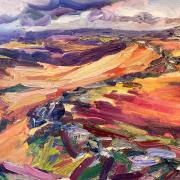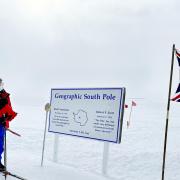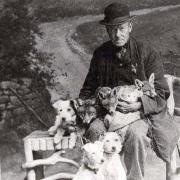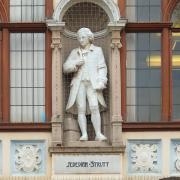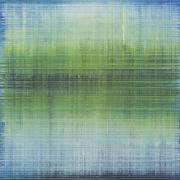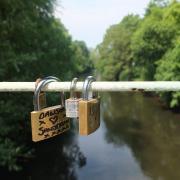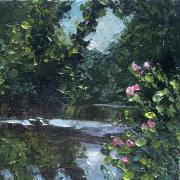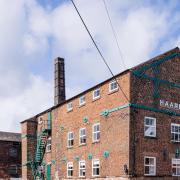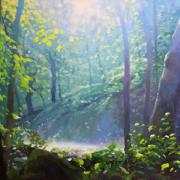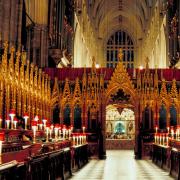Mike Smith visits the Nightingale Centre at Great Hucklow which has begun work to build an Iron Age Roundhouse
As from this May, scores of inner-city children taking a free holiday in the village of Great Hucklow will gather in a meeting place that is ‘out of this world’. For the last 50 years, a charity known as SACH (Send a Child to Hucklow) has been giving children, especially those who have problems which act as barriers to their educational, social and emotional development, the chance to put aside the stresses of everyday life and enjoy a week-long respite in the Peak District. The countryside breaks are based at the Nightingale Centre, a holiday and conference facility, whose indoor meeting rooms are about to be supplemented by a novel type of meeting room in the grounds.
The new gathering space really will be out of this world because it is designed to be an authentic replica of the sort of structure that existed throughout the Peak District in the Iron Age world. Explaining why she decided to add this unusual new resource, centre manager Stella Burney said: ‘We already give many of the children who come out to Great Hucklow the first chance they have ever had to explore the countryside, but I also wanted us to give them something else that they had never experienced before.’
Stella continued: ‘I’d heard that some centres, such as Heeley City Farm in Sheffield, have constructed roundhouses based on those used by Iron Age people and I thought that one of these large circular structures would give us a perfect gathering place for lots of different activities. I had this lovely vision of young people talking, singing or listening to stories while sitting around the cosy hearth of the roundhouse and enjoying roasted marshmallows.’
Knowing that considerable funding would be required for her project, Stella went cap in hand to the Peak District National Park Authority, which had already offered a large grant from their Sustainable Development Fund to support efforts which are being made at the Nightingale Centre to reduce energy use by 60 per cent and waste by 30 per cent. These measures include extensive recycling, fitting energy-saving devices, using local suppliers, adapting a redundant tank in the lawn of the centre for rainwater-harvesting and growing as much of their own food as possible.
Richard Godley, the national park’s sustainable development officer, told me: ‘We decided to give a second pot of money to the centre because their roundhouse project meets lots of sustainability criteria. The structure will be built from local renewable materials and will have a turf roof, so it will not only help children to learn about an ancient culture in the Peak District, but will also enable them to see how past methods can be adapted to the present. Young people from a number of groups will be involved in the project and there’s a nice urban-rural link.’
The construction team for the roundhouse includes staff and guests at the Nightingale Centre, students from Hope Valley College, pupils from Great Hucklow School, members of Peak District Young Archaeologists, archaeology students from Sheffield University and various volunteers. Stella is also keen to involve Great Hucklow Community Spirit, a village committee which organises and promotes local events. All these groups are working under the guidance of Dr Roger Doonan, who was involved in the roundhouse project at Heeley City Farm and is an expert in Bronze and Iron Age metal production – he is currently involved with projects in Siberia and Greece as well as the UK. Roger teaches experimental archaeology at the university and, as Director of Outreach, he is very keen to involve the wider community in archaeological investigations.
The construction team aims to make the roundhouse as authentic as possible, not just in terms of its appearance but also in terms of the techniques and materials used. Without the existence of above-ground remains and with only scant evidence below ground, it might be thought that authenticity would be difficult to achieve. However, ancient post holes have survived and ‘foundation deposits’ have been discovered near Iron Age structures. The construction team is also picking up clues about the way wood was worked on the roundhouses from the methods used to fashion stone at ancient sites such as Stonehenge.
Reflecting on the research that has gone into the project, Roger said: ‘Using the finished roundhouse will be great, but actually building it is a bonus. In researching the ancient construction methods, we’ve had to act like detectives, but we’ve been trying to find ‘how they dunnit’ rather than ‘who dunnit’. Copying techniques used by people from times past gives us an opportunity to think what it would be like to be in their shoes. It is the nearest most of us will get to time travel.’
Terry Worthington, a local mining engineer and amateur archaeologist, is overseeing the construction work and contributing his expertise, which has been gained from his long experience of the challenges of building significant structures. By last November Terry had overseen the carpentry and the installation of the sweet chestnut posts that will form the framework of the structure. Pointing to a huge bundle of willow, he said, ‘We will need the equivalent of 2kms of willow for the walls and roof, plus six tonnes of clay – and untold sweat and a few tears.’
One afternoon late last November, various groups involved in the project gathered in the grounds of the Nightingale Centre to bury time capsules in a hole that had been dug outside the base of the roundhouse. The ceremony also included an Iron Age smelting demonstration given by Roger Doonan, who was assisted by Vicky Qian, one of his MSc students. Explaining that burying time capsules would be in keeping with the nature of the project, Roger said: ‘Iron Age people would often bury “foundation deposits” near to their roundhouses. These consisted of items that were important to them and objects that they thought would bring them luck. The deposits sometimes included the bodies of deceased members of the community.’
As the Nightingale Centre was founded by the Unitarians, Stella wanted their own time capsule to include the Unitarian symbol, which is a cross-like image of a flaming chalice. Having decided that a small metallic replica of the symbol would be an appropriate outcome of his Iron Age smelting demonstration, Roger set to work with the help of Vicky Qian, who summoned all her strength to operate a huge set of bellows used to stoke the fire for the smelting. Various onlookers then took turns on the bellows and a red-hot metal Unitarian symbol began to emerge from the fire. After cooling in water, the symbol was duly added to the foundation deposits.
Although SACH is a Unitarian charity, it offers holidays at Great Hucklow to young people without regard to religion, nationality or race, and without seeking in any way to influence their religious associations or beliefs. The aim is quite simply to give countryside breaks to children who would not otherwise have a holiday – or experience the fun of eating roasted marshmallows around the hearth of an Iron Age roundhouse.
For information about the Nightingale Centre, see www.thenightingalecentre.org.uk and to find out more about SACH, see www.sendachildtohucklow.org.uk





